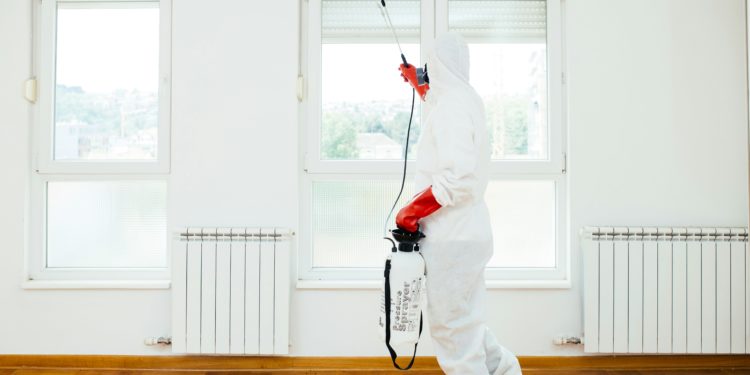Navigating pest control strategies to maintain a bug-free home can be daunting. With an array of pests threatening the comfort of your home, the need for effective solutions becomes vital. Like water damage affecting homeowners’ insurance claims, pest trouble can similarly impact your peace of mind.
The key to pushing pests back lies in adopting targeted and smart strategies. Depending on your specific issue, you may need a multi-layered approach or a simple fix. Notably, bed bugs often require targeted professional help.
Don’t let these relentless critters invade your space. With the right help, you can take care of your bed bug problem effectively ensuring a comfortable living environment. This is as essential as taking good care of other aspects of your home.
Detecting the Pests
Your first step towards a bug-free home is identifying what pests have intruded into your space.
Their size, shape, color, and behavior can give you clues about their identity.
Physical Signs
Pests leave traces. Look out for droppings, shredded materials, or odd smells. These are all indicative of an infestation.
Check hidden corners and crevices, pests often lurk in inaccessible spots.
Observe Behavior
Notice any unusual activities around your home. Are there insects clustering near a certain area? This could point to a nearby nest or hive.
Nocturnal pests can be caught by setting traps at night. Positive results direct you to the right pest control methods.
Auditory Clues
Hearing sounds such as scratching or scurrying at night could mean that pests like rodents are active in your home.
If these sounds are frequent, it’s critical to act fast to prevent population growth and further damage to your property.
Multipoint Pest Inspection
Your very first step in maintaining a bug-free home is conducting a multipoint pest inspection. It’s paramount to check every nook and corner painstakingly.
Often, pests thrive in hidden spots like your basement or attic. These neglected corners of your house may be housing unwanted intruders without your awareness.
Don’t underestimate the importance of outdoor spaces either. Your garden, garage, or shed could be a hotspot for different pests like ants, rodents, or termites.
An inspection will pinpoint these problem areas early, giving you an opportunity to act swiftly and effectively. Timely intervention can prevent a full-blown infestation.
- Check for signs of insects: Dead bugs, fecal droppings, or strange marks on walls could signify an infestation.
- Listen for unusual sounds: Clicks, rustling noises in the walls or under the floorboards can signal the presence of pests.
- Watch out for physical damages: Gnawed wires, holes in the walls or wooden furniture are clear indicators of pests.
- Pest-related odors: Strange smells can be a hint of roaches, mice, or other types of vermin lurking around.
A comprehensive multi point inspection will equip you with critical information about potential menace at their earliest stages and enable absolutely efficient management methods.
Now that you understand what to look out for, invest your time wisely to identify any signs of these unwelcome guests. Don’t overlook even the smallest clues!
Choosing a Suitable Pest Control Plan
Before implementing a pest control plan, it’s vital to understand your home’s specific needs. Every property has unique concerns that reflect distinct challenges.
Identify Pest Infestations
First, it’s crucial to identify the type of pests infesting your home. This step decides the pest control strategies you will employ.
Learn about their behaviors and common hiding spots. Comprehensive knowledge expedites the elimination process, ensuring effective control.
Select Appropriate Methods
Once you’ve identified them, select suitable pest control methods. These might range from simple traps to professional services, depending on infestation severity.
Different pests require different eradication methods. Therefore, ensuring that your chosen solution aligns with your pest issue is exceedingly important.
Continuous Monitoring
Pest control isn’t just a one-time project, but a long-term commitment. Continuous monitoring can prevent future infestations effectively.
Take note of potential hotspots in and around your property. Regularly clean these areas to mitigate risks and keep pests at bay.
Implementing Pest Control Strategies
Crafting an effective pest control strategy is critical for maintaining a healthy, bug-free home. Prevention is key; stop those critters in their tracks.
You should prioritize cleanliness throughout your home. Bugs thrive in filthy environments, making regular tidying a powerful tool against potential infestations.
Sealing your house effectively ensures pests have no point of entry. A well-sealed home deters most bugs, keeping them outdoors where they belong.
- Use preventive treatments: Apply sprays or powders regularly as one of the main advancements in pest control strategies.
- Maintain cleanliness: Routine cleaning of places like the kitchen and bathroom is vital to avoid attracting pests.
- Seal entry points: Ensure small spaces around windows, doors or floors are completely sealed off.
- Employ professional services: Depending on the severity of the infestation, a professional pest control service may be required.
Detecting symptoms of a pest infestation early can save a lot of stress and cost. Be vigilant about any signs or unusual activity in your home.
While employing these strategies, consistent monitoring is crucial for maintaining a pest-free environment. According to the National Pest Management Association, it’s advised to stay proactive with routine checks.
Selecting specific approaches tailored to your needs can make all the difference. They ensure necessary measures are taken for different types of infestations.
Your fight against pests is an ongoing process. The journey towards a bug-free home is less daunting when armed with effective, actionable strategies.
Scheduling Regular Treatments
Keeping your home bug-free requires constant vigilance, patience, and strategic efforts. Scheduling regular pest control treatments is a crucial step.
Why do professionals recommend routine treatments?
Regular treatments help maintain a defensive barrier, preventing pests from infesting your home or becoming overwhelming in numbers.
How often should these treatments occur?
You should schedule preventive pest control treatments quarterly. Seasonal changes can attract different types of pests to your home.
What if I spot pests between scheduled treatments?
If you notice pests between your regular treatments, immediately get in touch with your pest control professional for further guidance.
Are these treatments harmful to my family or pets?
No, most modern pest control treatments are designed to be safe for both humans and pets when used properly.
Ensuring Guaranteed Protection
Your home is your fortress. It’s essential to have a robust battle plan against unwanted pests attempting a siege.
Knowing the enemy is just as crucial. Identify the bugs that are invading your space.
Once you’ve identified them, adopt tailor-made strategies suitable to combat these specific pests.
| Pest | Strategy | Product |
| Ants | Bait Stations | Advance 375A |
| Cockroaches | Gel Baits | Maxforce Magnum |
| Mice | Snap Traps | Trapper T-Rex |
| Spiders | Contact Sprays | Suspend SC |
This table provides an insight into possible strategies against some common household pests and their recommended products for guaranteed protection.
The right strategy can effectively prevent further invasions, providing a bug-free comfortable living environment for you and your family.
No matter the size or type of your home, these strategies can help. Back up your efforts with professional assistance if needed, to ensure a bug-free home.
Peace of Mind Secured
Your journey to a bug-free home doesn’t have to be tough. Start by spotting pests, select an effective plan, implement it meticulously, keep up with regular treatments, and you’ll enjoy guaranteed and long lasting protection. It’s your home, ensure it stays pest-free.













































































